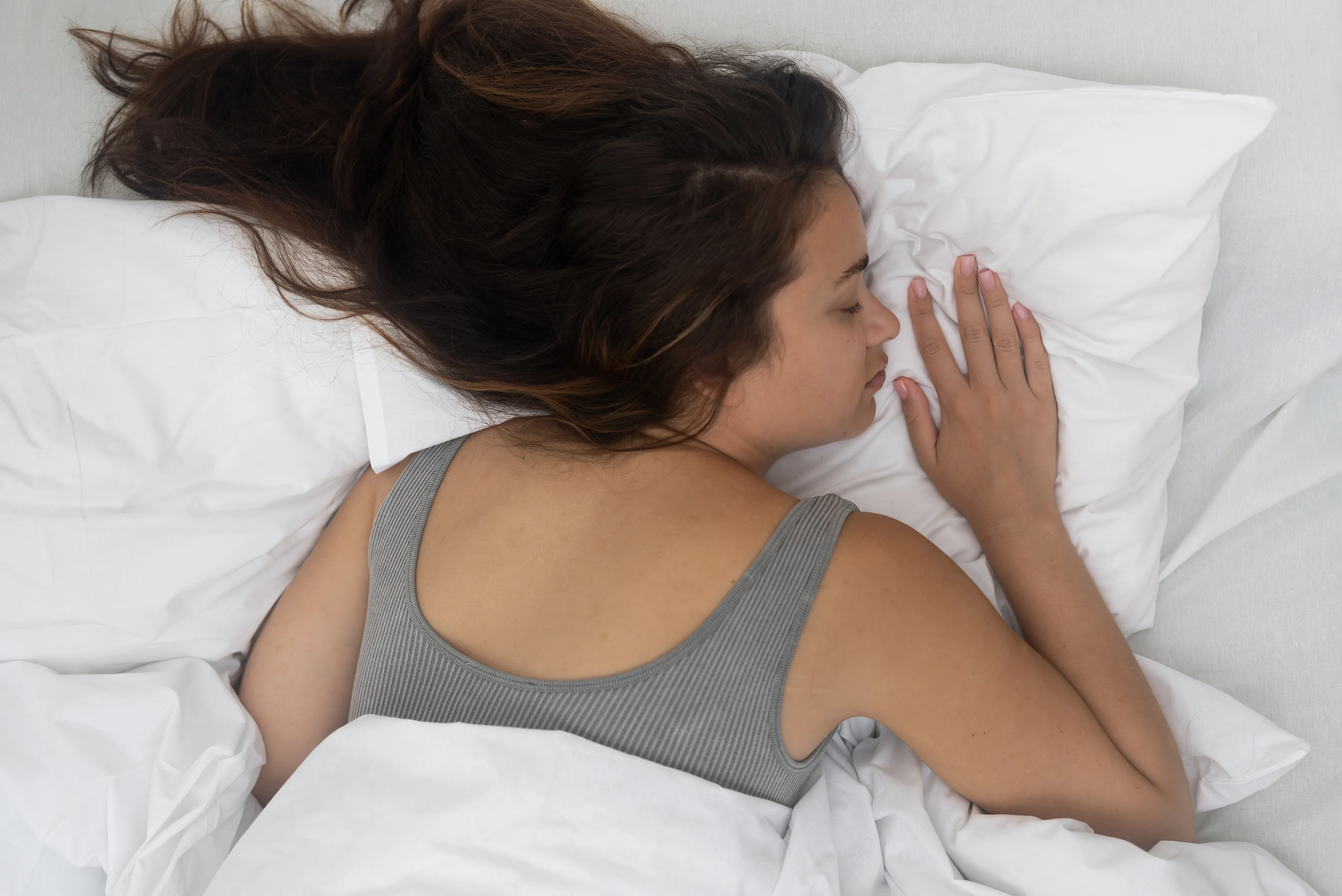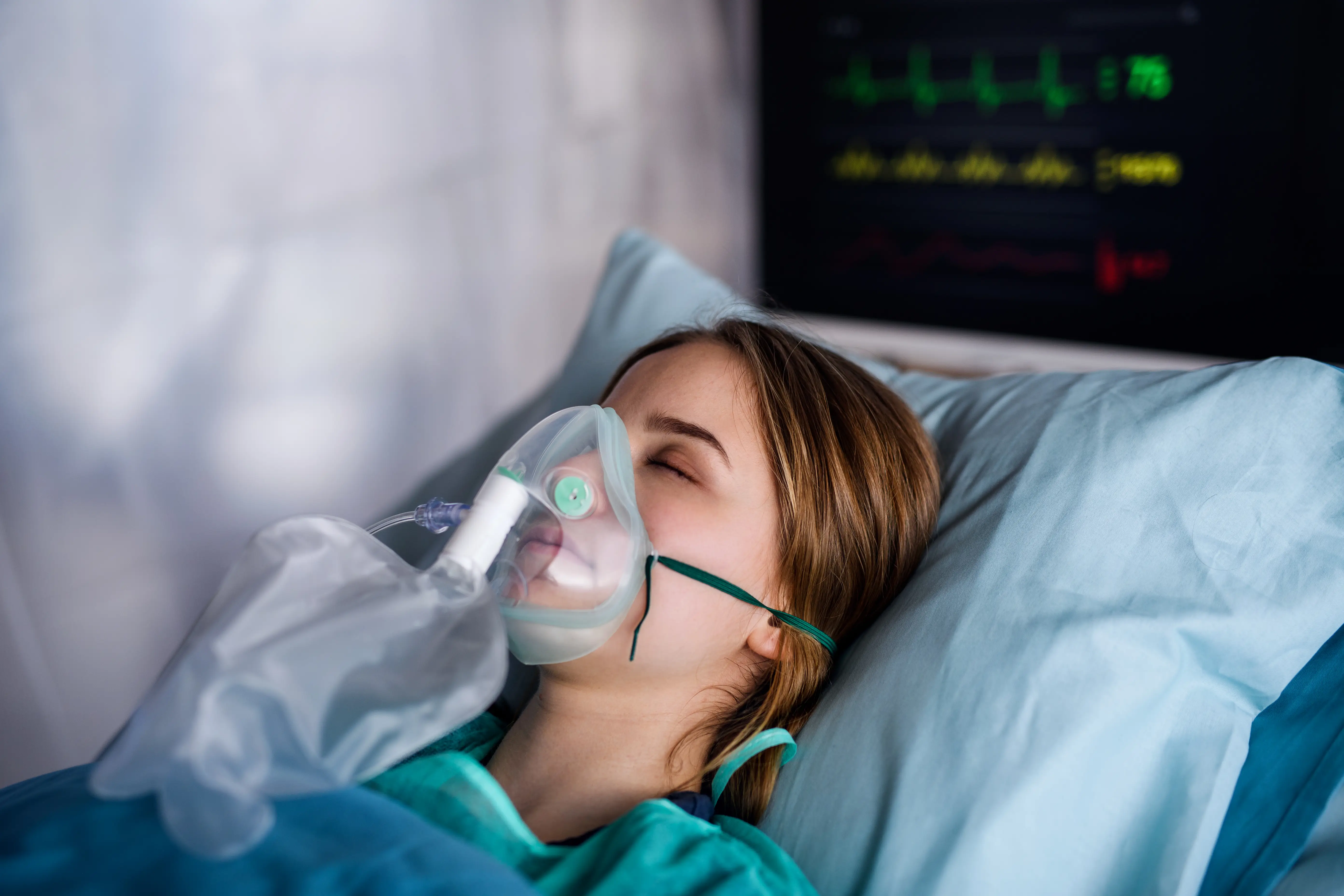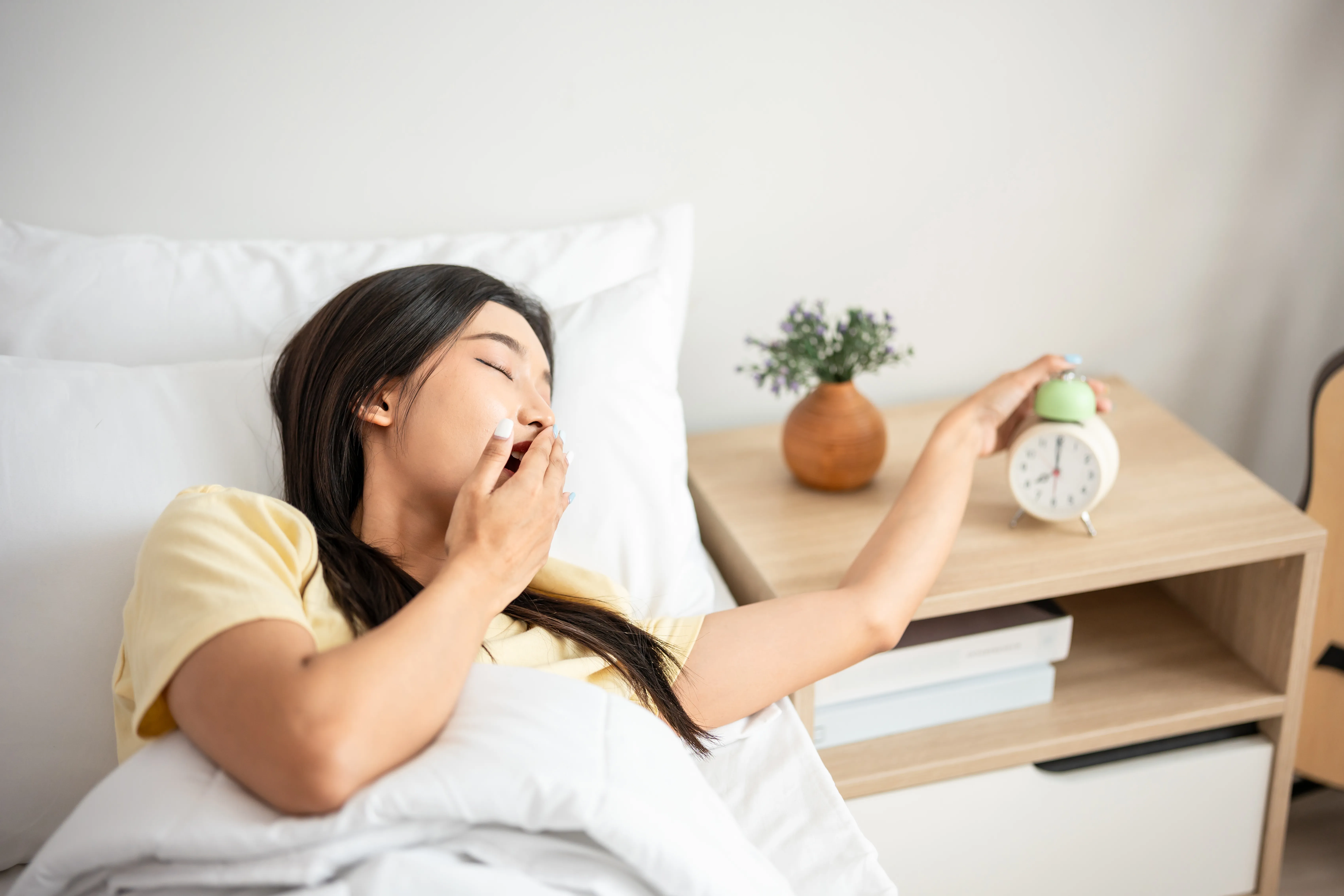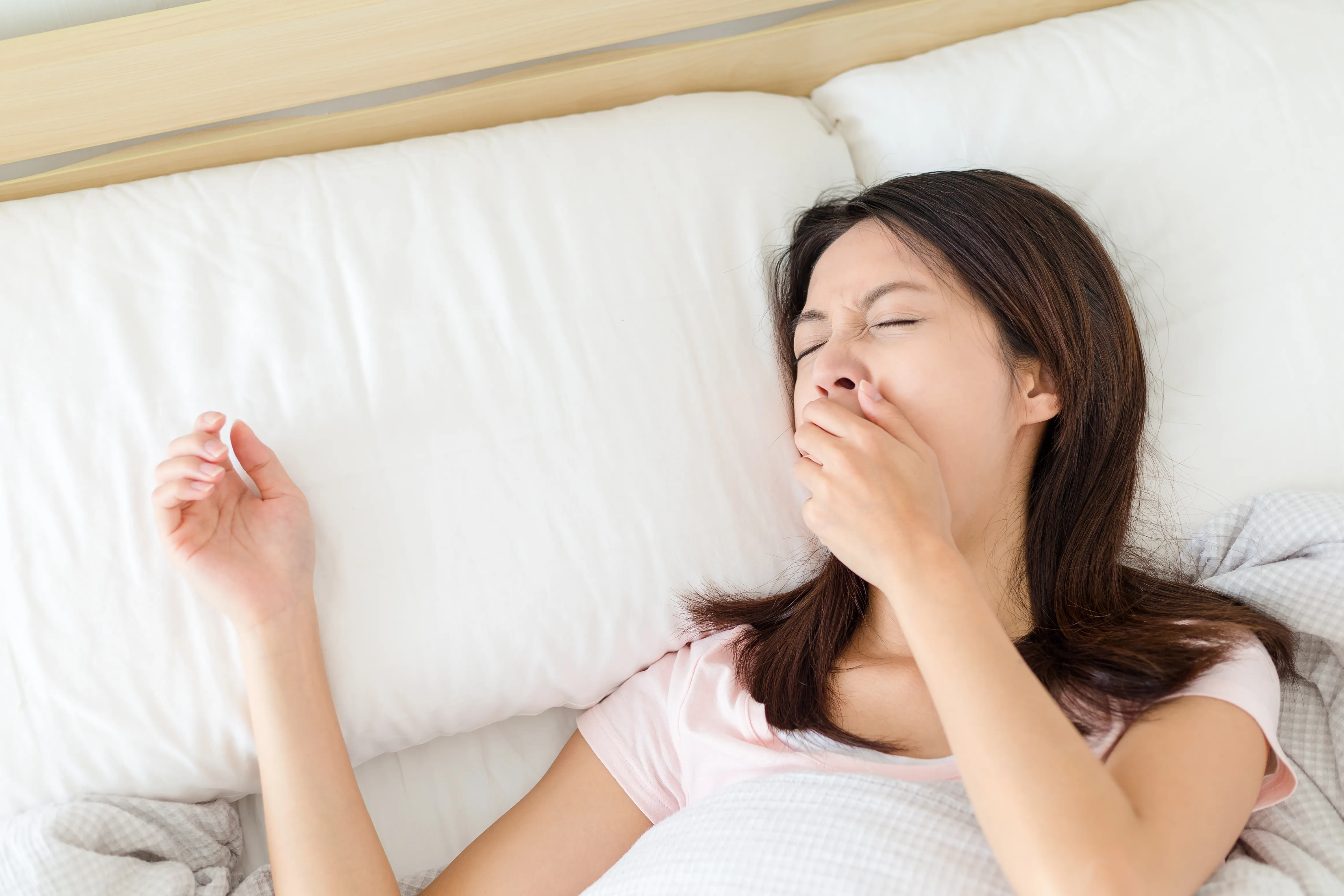When we sleep, our bodies shift into a restorative state, and our breathing pattern changes to support that transition. One key metric that reflects this change is the sleep respiratory rate, the number of breaths taken per minute during sleep.
Although subtle, this rate can reveal a lot about your respiratory efficiency, sleep quality, and even underlying health conditions. For example, irregularities in respiratory rate can be an early sign of disorders like sleep apnea.
In this article, we’ll explore the importance of tracking your breathing rate while sleeping and what it can tell you about your body’s inner workings.
What Is Sleep Respiratory Rate?
Sleep respiratory rate refers to the number of breaths you take per minute while sleeping. It naturally slows down during sleep compared to when you’re awake, particularly in deeper sleep stages like slow-wave sleep. For most healthy adults, the average sleep respiratory rate falls between 12 and 20 breaths per minute.
However, individual rates can vary slightly based on age, fitness level, and medical conditions. Monitoring this metric over time can provide insights into sleep quality, help detect disorders like sleep apnea, and even indicate respiratory or cardiac stress before symptoms become obvious.
How It Differs from Awake Respiratory Rate
While you're awake, your respiratory rate is influenced by movement, emotion, conversation, and environmental factors. On average, adults breathe about 12 to 20 times per minute when awake. During sleep, especially in non-REM stages, this rate becomes more regular and often slower, as the body enters a relaxed state.
However, in REM sleep, where dreaming occurs, breathing may become more irregular or shallow due to increased brain activity. These fluctuations are normal, but significant deviations from your typical sleep respiratory pattern can signal disruptions like sleep apnea or chronic respiratory conditions.
Why Is Sleep Respiratory Rate Important?
Tracking your sleep respiratory rate offers more than just a number; it can provide a window into your overall health. A consistently elevated or erratic respiratory rate during sleep may suggest poor sleep quality, frequent arousals, or undiagnosed sleep disorders like sleep apnea.
More importantly, it serves as a potential early indicator of respiratory issues such as asthma or COPD, as well as cardiovascular problems like heart failure.
By identifying irregularities in sleep breathing patterns, healthcare providers and sleep trackers can intervene early, helping you get a proper diagnosis and treatment before bigger issues develop.
Normal Respiratory Rate During Sleep
Your respiratory rate naturally changes once you fall asleep, often slowing down and becoming more stable as your body relaxes. What’s considered “normal” varies by age, health condition, and even the specific stage of sleep you're in.
While occasional variations are expected, consistently abnormal breathing rates during sleep may signal underlying problems like sleep apnea, chronic respiratory illness, or cardiovascular stress.
Understanding what’s typical for your age group and how sleep stages affect your breathing can help you better interpret your nightly patterns and spot red flags early.
Typical Ranges by Age
Sleep respiratory rate isn't one-size-fits-all; it shifts based on age, developmental stage, and individual health. For example, newborns breathe much faster than adults due to their smaller lungs and higher metabolic demands.
As we grow older, our breathing patterns slow and stabilize. The table below outlines typical respiratory rates during sleep across different age groups.
| Age Group | Average Respiratory Rate During Sleep Per Minute |
|---|---|
| Newborns (0–1 month) | 30-60 |
| Infants (1–12 months) | 30-50 |
| Toddlers (1–3 years) | 24-40 |
| Preschoolers (3–5 yrs) | 22-34 |
| Children (6–12 years) | 18-30 |
| Teenagers (13–18 yrs) | 12-20 |
| Adults (18+ years) | 12-20 |
| Older adults (65+ yrs) | 12-25 |
While these ranges serve as helpful benchmarks, it's important to remember that occasional deviations can be perfectly normal, especially during illness, stress, or physical exertion before bed.
However, consistently high or low respiratory rates during sleep may be worth discussing with a healthcare provider, especially if accompanied by symptoms like snoring, gasping, fatigue, or poor sleep quality.
Variations By Sleep Stage
- NREM Sleep: During non-rapid eye movement (NREM) sleep, particularly in stages 3 and 4 (deep sleep), the respiratory rate slows down and becomes more regular. The body is in a restful state, and breathing is typically calm and steady, a sign of efficient gas exchange and relaxation.
- REM Sleep: In rapid eye movement (REM) sleep, breathing becomes more variable. The rate may quicken or become irregular due to heightened brain activity and dream-related changes in autonomic function. Although it’s normal for breathing to fluctuate during REM, sharp drops in oxygen levels or frequent interruptions may point to sleep-disordered breathing.
Factors That Affect Sleep Respiratory Rate

Your sleep respiratory rate can fluctuate due to a wide range of internal and external influences. While some factors are short-term and harmless, others may signal deeper issues with your respiratory or nervous system.
Understanding these variables can help you better interpret breathing data and recognize when changes may need medical attention.
Sleep Apnea And Breathing Disorders
Conditions like obstructive sleep apnea (OSA) and central sleep apnea can cause irregular breathing patterns, pauses in respiration, periods of rapid shallow breathing, or even heart failure.
These disruptions often lead to fragmented sleep and dips in oxygen levels, forcing the body to overcompensate with heavier or faster breathing. Sleep-disordered breathing is one of the most common causes of abnormal sleep respiratory rates and often goes undiagnosed without proper sleep studies.
Physical Activity And Fitness Levels
Athletes and individuals with higher cardiovascular fitness often have slower, more efficient breathing patterns, even during sleep. This is due to improved lung capacity and oxygen utilization.
On the flip side, people with sedentary lifestyles or poor physical conditioning may breathe more rapidly during sleep, especially during REM or after physically demanding days.
Medications And Substances
Certain medications, like sedatives, opioids, or muscle relaxants, can suppress respiratory drive and slow breathing during sleep. Alcohol can have a similar effect, relaxing throat muscles and increasing the risk of snoring or apnea.
Stimulants like caffeine or certain psychiatric drugs may lead to shallower or more rapid breathing, depending on how they affect the nervous system.
Stress and Anxiety
Psychological factors don’t switch off completely during sleep. Chronic stress or anxiety can lead to increased baseline respiration or irregular breathing patterns, especially during REM sleep when dreams may mirror emotional states. This can result in elevated sleep respiratory rates and more frequent micro-awakenings.
Age and Development
As seen in the earlier table, age plays a major role in determining baseline respiratory rate. Infants and children breathe faster than adults, while older adults may experience mild increases in rate due to reduced lung elasticity or underlying health conditions. Developmental stages also influence sleep architecture, which in turn affects breathing.
Altitude
Sleeping at high altitudes can increase your respiratory rate as your body tries to compensate for lower oxygen levels. This is a natural response known as high-altitude periodic breathing, where breathing may become faster and shallower. Over time, most people acclimate, but temporary changes in sleep breathing patterns are common.
Sleep Position
Your sleeping posture can directly impact your breathing. Lying flat on your back (supine position) may worsen snoring or cause airway collapse in those with sleep apnea. Side-sleeping tends to support better airflow and more stable breathing.
Stomach sleeping may restrict chest expansion and influence respiratory rate in some individuals. Even slight shifts in head or neck alignment can change how easily air flows during sleep.
What Abnormal Sleep Respiratory Rates Indicate
While minor fluctuations in breathing during sleep are normal, consistently abnormal respiratory rates may point to underlying health concerns. Deviations from the typical range, whether slower, faster, or erratic, can affect oxygen delivery, disrupt sleep cycles, and signal medical conditions that require attention.
Below are the most common types of abnormal breathing patterns during sleep and what they might indicate.
Slow Respiratory Rate (Bradypnea)
Bradypnea refers to a respiratory rate that is abnormally slow, generally fewer than 12 breaths per minute in adults during sleep. This can result from neurological disorders, certain medications (like opioids or sedatives), or conditions that impair brainstem function.
In some cases, bradypnea may lead to hypoventilation, where not enough oxygen is taken in, and carbon dioxide builds up in the blood. If persistent, this pattern can contribute to headaches or even heart strain.
Fast Respiratory Rate (Tachypnea)
Tachypnea is characterized by an abnormally high breathing rate, usually more than 20 breaths per minute in adults while asleep. This may be a temporary response to fever, pain, or high altitude, but when persistent, it could suggest lung infections (like pneumonia), anxiety disorders, heart failure, or chronic respiratory diseases such as asthma or COPD.
Tachypnea during sleep can disturb the balance between oxygen intake and carbon dioxide release, leading to poor sleep quality and reduced oxygen saturation.
Irregular Breathing Patterns
Some people experience unpredictable or chaotic breathing rhythms during sleep that don’t fit neatly into categories like bradypnea or tachypnea.
These may include periodic breathing (cycles of rapid breathing followed by slower or paused breaths) or Cheyne-Stokes respiration, a crescendo-decrescendo pattern often associated with heart failure or neurological disorders. Irregular sleep breathing is a red flag for poor autonomic control and should be evaluated if frequent or severe.
Apnea and Hypopnea
Apnea refers to complete pauses in breathing lasting 10 seconds or longer, while hypopnea refers to shallow or reduced airflow. Both are central features of sleep apnea syndromes. These interruptions can occur dozens or even hundreds of times per night, leading to oxygen desaturation and fragmented sleep.
Over time, untreated apnea or hypopnea increases the risk of high blood pressure, heart disease, stroke, and cognitive decline. Recognizing these patterns often requires sleep studies or wearable sleep monitors for accurate diagnosis.
How Sleep Respiratory Rate Is Measured

Measuring your sleep respiratory rate accurately is essential for diagnosing potential sleep disorders and understanding your overall health. Advances in technology have made it easier to track breathing patterns both in clinical settings and at home. Below are the most common methods used to measure respiratory rate during sleep.
Polysomnography (Sleep Study)
Polysomnography is the gold standard for assessing sleep quality and respiratory function. Conducted overnight in a sleep lab, this comprehensive test records brain waves, oxygen levels, heart rate, airflow, chest movements, and respiratory effort.
Using sensors placed on the body, technicians monitor your breathing patterns in real time to identify abnormalities such as apneas, hypopneas, and changes in respiratory rate. While highly accurate, polysomnography can be costly and requires an overnight stay at a specialized center.
Wearable Devices and Home Monitoring
Recent advances in wearable technology have made it possible to monitor sleep respiratory rate outside the lab. Devices like smartwatches, fitness bands, and dedicated sleep trackers use sensors such as accelerometers, optical heart rate monitors, and even radar or microphone technology to estimate breathing rate during sleep.
Home sleep apnea tests also measure airflow and oxygen levels and provide valuable insights. While less comprehensive than polysomnography, these options offer convenience and ongoing monitoring that can help detect trends and alert users to potential problems.
How To Maintain a Healthy Sleep Respiratory Rate

Maintaining a healthy sleep respiratory rate is key to improving sleep quality and overall well-being. While some factors like age or genetics are beyond control, many lifestyle changes and interventions can support better breathing during sleep. Below are effective strategies to help you maintain steady, restful respiration throughout the night.
Breathing Exercises And Relaxation Techniques
Practicing mindful breathing exercises before bedtime can help regulate your respiratory rate and calm the nervous system. Techniques such as diaphragmatic breathing, box breathing, or progressive muscle relaxation reduce stress and encourage deeper, slower breaths.
These methods not only improve your sleep respiratory rate but also promote overall relaxation, making it easier to fall asleep and stay asleep.
Treating Underlying Sleep Disorders
If you have conditions like sleep apnea, asthma, or chronic obstructive pulmonary disease (COPD), managing these disorders is critical for maintaining a healthy respiratory rate during sleep.
This may involve using CPAP machines, prescribed medications, or other therapies recommended by your healthcare provider. Early diagnosis and treatment can prevent complications and normalize your breathing patterns at night.
Lifestyle Changes To Improve Respiratory Health
Making simple lifestyle adjustments can have a significant impact on your respiratory health and help maintain a steady, healthy breathing rate during sleep. Here are a few ways you can improve your respiratory health and support better breathing during sleep through everyday lifestyle changes.
- Maintain a Healthy Weight: Excess weight, especially around the neck and chest, can restrict airflow and increase the risk of sleep apnea. Maintaining a healthy weight through diet and exercise helps reduce breathing difficulties during sleep.
- Avoid Smoking: Smoking irritates the airways and damages lung tissue, leading to inflammation and impaired respiratory function. Quitting smoking improves lung capacity and decreases the likelihood of breathing disruptions at night.
- Manage Stress: Chronic stress and anxiety can cause rapid or irregular breathing patterns. Incorporating stress management techniques like meditation, yoga, or counseling supports calmer respiration during sleep.
- Engage in Regular Exercise: Regular physical activity strengthens respiratory muscles and enhances lung function, which contributes to more efficient and stable breathing during sleep. Aim for at least 30 minutes of moderate exercise most days of the week.
FAQs
What Is The Normal Respiratory Rate During Sleep?
For most adults, a normal sleep respiratory rate ranges between 12 and 20 breaths per minute. Rates vary by age and sleep stage, but staying within this range generally indicates healthy breathing during sleep.
How Can Sleep Respiratory Rate Affect Overall Health?
Abnormal sleep respiratory rates can disrupt oxygen delivery, leading to poor sleep quality and increasing risks of heart, lung, and brain health problems. Monitoring it helps detect conditions like sleep apnea early.
Can Sleep Disorders Change Respiratory Rate?
Yes, disorders like sleep apnea cause irregular breathing, pauses, or rapid breaths during sleep. These disruptions affect respiratory rate and can seriously impact sleep quality and overall health if untreated.
When Should I Be Concerned About My Sleep Breathing Rate?
Seek medical advice if you notice consistently very slow, fast, or irregular breathing during sleep, especially with symptoms like snoring, gasping, daytime fatigue, or frequent awakenings. Early diagnosis is key.
Conclusion
Your sleep respiratory rate is an important sign of health. Normal variations are fine, but consistent changes may indicate problems like sleep apnea. Maintaining healthy habits and seeking medical advice when needed can help ensure better sleep and overall well-being.
Karen Barnard
Karen is a Human Movement Science expert and a certified sports nutrition and massage therapist. At Sleepiverse, she combines her passion for human movement science and sleep health to educate herself and her readers about healthier sleep. In addition to writing articles, Karen manages a fitness studio offering private training, athletic conditioning, and sports massage therapy. She focuses on providing people with a holistic environment for people to reach their health goals, often incorporating stretch therapy to promote mental tranquillity and help people improve their sleep.


